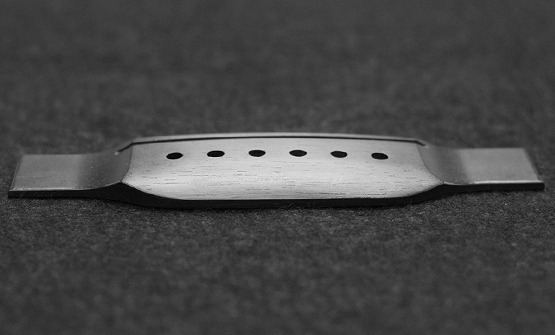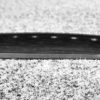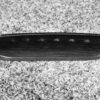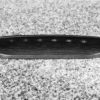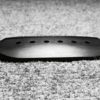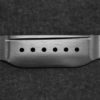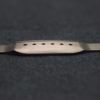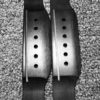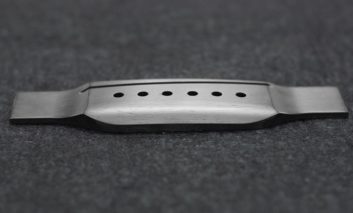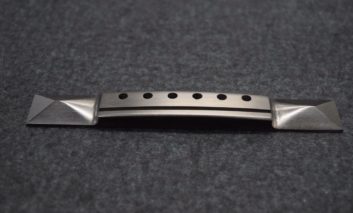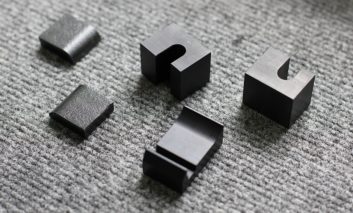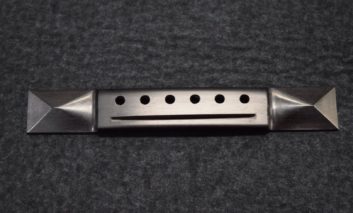1930’s Style “Belly” Bridge
Replica of bridge CF Martin Co used from the late ’20’s to mid 1938
Most of the bridges from this period used either a 2 5/16″ or 2 3/8” hole spacing. The neck angle was set first and then workers chose from three different height bridges: 5/16″, 11/32″ and 3/8”. I’ve chosen to manufacture these replacement bridges in the middle range (roughly 11/32”) as the default height (and the height I shoot for when resetting a neck). For an additional fee I can make a custom height for your particular project.
The 1930 versions of this bridge barely had any detectable saddle compensation. By early 1931, we see nearly a 1/16″ compensation and by the end of 1932, a full 1/16″, which is the vintage option available above. The guitar won’t play in tune as well as the “modern” or fully compensated option (nearly 3/16″), but if you’re restoring a clean Martin guitar made in the late ’20’s early 1930’s, this is the correct saddle configuration. If you are restoring a Martin guitar built between 1934 through mid 1938, the guitar and your client will likely prefer the fully-compensated ‘modern” saddle slot. I’ve included the (last) picture of two bridges side by side so you can see the difference between the vintage (bridge on left) and “modern” (bridge on right) compensation.
